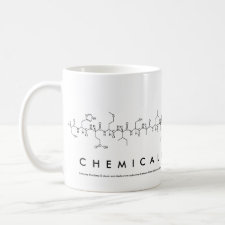
Authors: Atta NF, Hamed MM, Abdel-Mageed AM
Article Title: Computational investigation and synthesis of a sol-gel imprinted material for sensing application of some biologically active molecules.
Publication date: 2010
Journal: Analytica Chimica Acta
Volume: 667
Issue: (1-2)
Page numbers: 63-70.
DOI: 10.1016/j.aca.2010.04.005
Alternative URL: http://www.sciencedirect.com/science/article/B6TF4-4YTFBRT-1/2/5b62f8c1d28825def722a8ea8c25cf41
Abstract: A hybrid sol-gel material was molecularly imprinted with a group of neurotransmitters. Imprinted material is a sol-gel thin film that is spin coated on the surface of a glassy carbon electrode. Imprinted films were characterized electrochemically using cyclic voltammetry (CV) and the encapsulated molecules were extracted from the films and complementary molecular cavities are formed that enable their rebind. The films were tested in their corresponding template solutions for rebinding using square wave voltammetry (SWV). Computational approach for exploring the primary intermolecular forces between templates and hydrolyzed form of the precursor monomer, tetraethylorthosilicate (TEOS), were carried out using Hartree-Fock method (HF). Interaction energy values were computed for each adduct formed between a monomer and a template. Analysis of the optimized conformations of various adducts could explain the mode of interaction between the templates and the monomer units. We found that interaction via the amino group is the common mode among the studied compounds and the results are in good agreement with the electrochemical measurements
Template and target information: mixed template, neurotransmitters, dopamine, tyramine, dopa, dopac, tyrosine, epinephrine, norepinephrine, catechol
Author keywords: molecular imprinting, Surface template, Neurotransmitters, computational design, molecular modeling



Join the Society for Molecular Imprinting

New items RSS feed
Sign-up for e-mail updates:
Choose between receiving an occasional newsletter or more frequent e-mail alerts.
Click here to go to the sign-up page.
Is your name elemental or peptidic? Enter your name and find out by clicking either of the buttons below!
Other products you may like:
 MIPdatabase
MIPdatabase









